
A Chief Brand Officer's Checklist for Getting the Cross Functional Team on the Same Page
As a chief brand officer (CBO), you have to be the brand’s champion. You need to make sure all elements work together to tell your customers a cohesive story. But how do you actually do that?
To do this successfully, you’ll need to manage a cross-functional team of internal players – including marketing, design, development, and communications – and external players from agencies across multiple locations.
This is no easy task. While the team may collectively share the same end goal of building a strong, consistent brand, their day-to-day objectives are rarely aligned. You can learn more about brand objectives in our guide.
Let’s say your brand is launching a new product. The marketing team wants the new campaign’s call to action to be bigger to increase conversions. The designers want to make sure everything is aesthetically pleasing, and the developers just want to create a functional, user-friendly website.
With team members focused on different results and separated by department and geography, it’s difficult for CBOs to get their team to work as one.
The Common Issues Your Cross-Functional Team Faces
It shouldn’t be surprising to learn that most cross-functional teams struggle with some common challenges. A Harvard Business Review study of 95 teams from 25 leading corporations found that nearly 75% are dysfunctional and often fail in three of the following five areas:
- meeting a budget
- staying on schedule
- adhering to specifications
- meeting customer expectations
- maintaining alignment with the company’s goals
The benefit of a cross-functional team is that members bring a wealth of knowledge from different areas. But with dysfunctional teams, each member is focused on their own objective (“We need to increase sales!”) instead of the larger company goal (“We need to create a cohesive experience for our customers!”).
The HBR study found silos are the reason most teams fail. Teammates aren’t used to working with one another across departments, and they don’t know how to communicate. When there’s poor communication, collaboration breaks down, and the work quality suffers.
There are ways to improve your team’s results. For example, the HBR study found that cross-functional collaboration projects with an executive champion – like a chief brand officer – had a 76% success rate.
So, what can you do to improve communication and collaboration across cross-functional teams? How can you get everyone on the same page to achieve brand goals that meet customer expectations?
How to Get Your Cross-Functional Team Aligned
Getting teams to succeed by collaborating and aligning around brand goals is crucial. While you are the brand’s leader, no single person can make a consistent brand experience alone. It simply isn’t possible for a CBO – or even just a small team – to create and review every asset to make sure it’s on-brand. To achieve consistency, you need to share brand stewardship responsibilities and get employees to work together to maintain brand integrity.
To help you get everyone to function as one cohesive unit instead of a mishmash of reluctant players, here are five solutions to help your cross-functional team create a consistent brand story.
1. Create Online Brand Guidelines
If your brand’s guidelines are its rulebook for how to present itself to the world, why would you risk errors and inconsistencies by emailing outdated PDF guidelines?
Improve consistency and efficiency across your team by moving to online Brand Guidelines like Frontify’s cloud-based platform. With a web-based solution, all your brand information, including colors, logos, fonts, and brand guidelines, are always up-to-date and accessible from anywhere. You can grant access to internal and external team members to make sure everyone has the latest brand information.
For example, Ticino Turismo, the tourism company for the Swiss region of Ticino, switched to Frontify’s Brand Guidelines to improve collaboration with external teams.
As a small company of about 40 people, Ticino Turismo relied on several external partners for its branding and marketing needs in international markets from Italy to India. Before Frontify, the company shared brand information by copying and pasting sections of outdated PDF guidelines into multiple emails. This process took a lot of time and caused inconsistencies in marketing materials, which diminished the brand’s value.
By switching to cloud-based guidelines instead of relying on emailed PDFs, Ticino Turismo was able to quickly share up-to-date brand information with its global teams. This resulted in significant time savings and improved brand consistency.
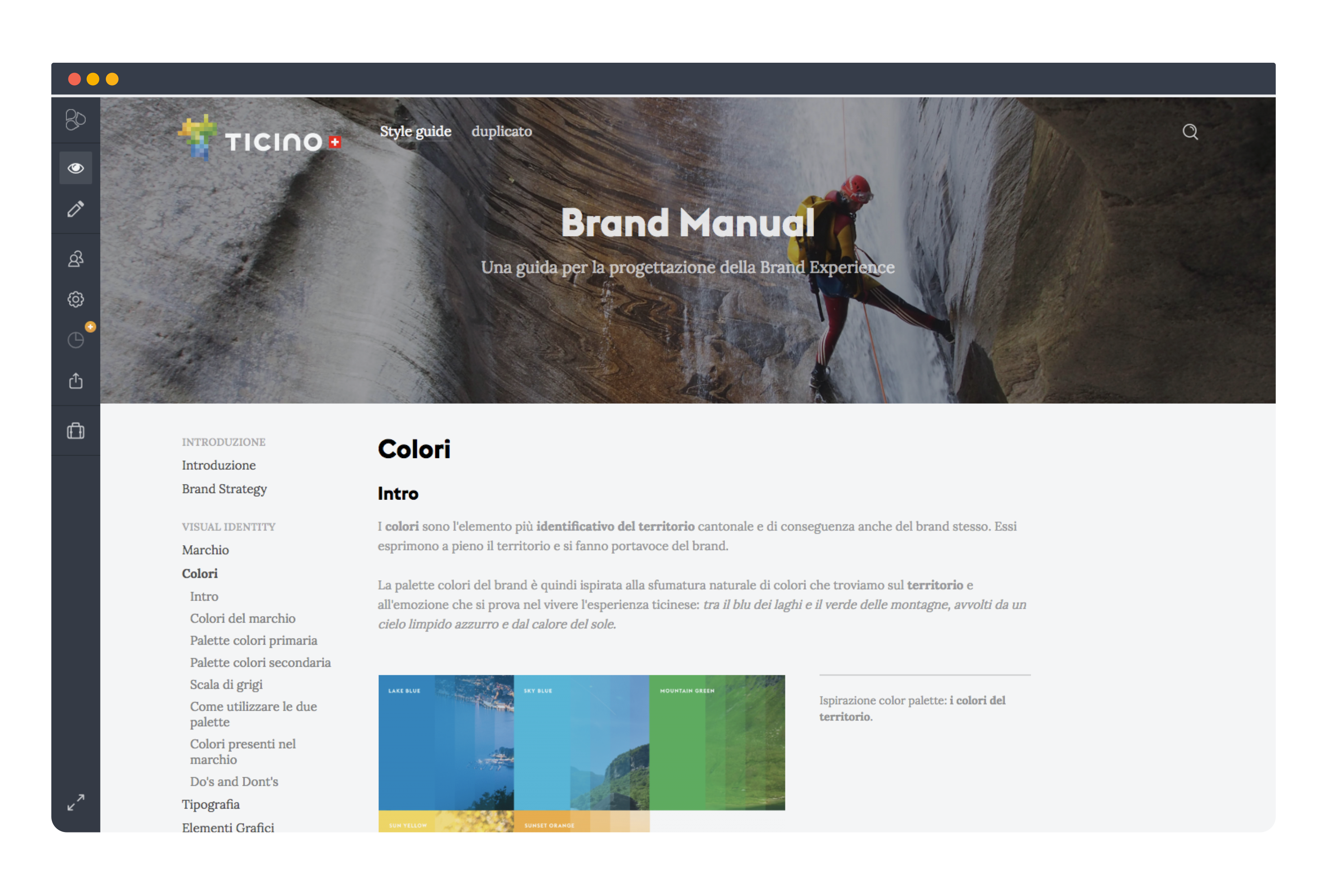
2. Get a Digital Asset Management Solution
Storing brand assets in confusing internal folder structures or sharing them via email makes it difficult for teammates to find what they need and increases the risk they’ll use incorrect assets. Improve the process for teammates to find and share brand materials by putting them online with a digital asset management (DAM) solution.
A survey of creative and marketing leaders from across several industries found those that got a DAM for their company saw a significant return on investment through:
- an increase in revenue by accelerating the delivery of marketing campaigns and product launches;
- a decrease in asset-creation costs by making it easier to reuse assets and avoid duplicated work;
- a reduction in risk by preventing unlicensed or unapproved assets from being used;
- and an improvement in productivity because of better collaboration.
With Frontify’s DAM, brands can store all of their assets – including photos, videos, icons, and documents – online. And the inclusion of metadata and custom tags makes it easy for teammates to search and find exactly what they need. Additionally, you can set user permissions and create asset life cycle stages to ensure teammates only find current, approved creative versions.
BAC Credomatic, a leading bank in many Central American countries, used Frontify to streamline its creative process and improve collaboration among design, development, and business teams.
With a growing design team and a presence in multiple markets, working together on design assets became complicated. By implementing a digital asset management solution, one brand leader per market was charged with uploading their creative assets in accordance with brand guidelines. With all assets – reviewed to match brand standards – in one searchable location, collaboration became easier, and BAC was able to reduce the number of design iterations needed to create on-brand materials.
3. Create an Online Project Room
An online project room helps dissolve departmental and geographic boundaries by bringing teammates together virtually to work on brand projects.
Instead of the design team working in a silo and sharing files once they’re completed, an online creative hub allows teammates to collaborate in real time to make sure projects adhere to brand goals.
Frontify’s online collaboration platform, Creative Collaboration, helps teams manage, discuss, and work on design iterations in one location. Features like auto-generated notifications, revision tracking, and a Kanban board-based system keeps all teammates up-to-date about where projects are in the design and approval process.
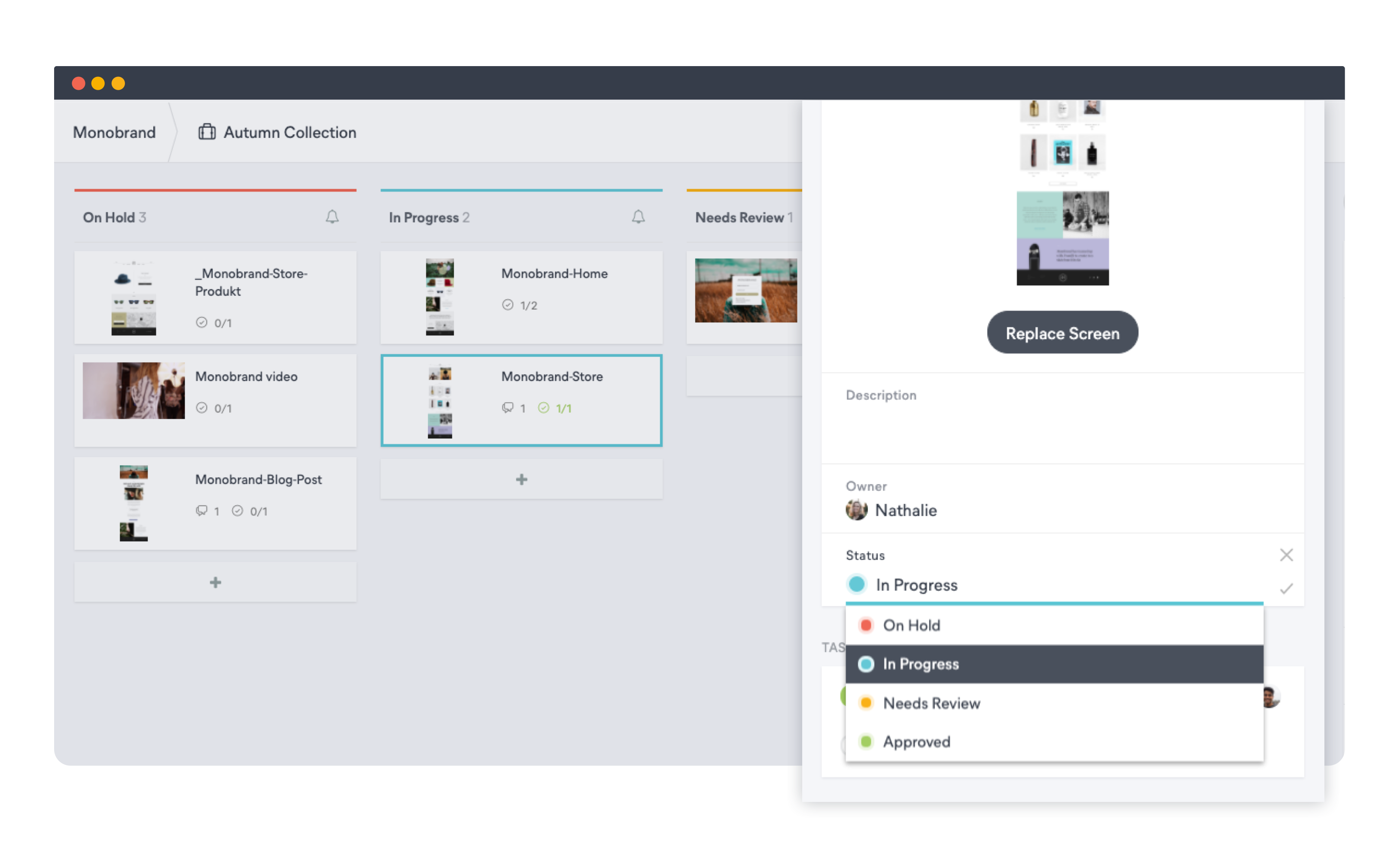
When Lufthansa, one of the world’s biggest airlines with more than 120,000 employees, began using Frontify’s Creative Collaboration, they were able to bring their internal and external teams together to improve their design process and ensure brand consistency.
Before Frontify, Lufthansa was using an old brand platform that lacked sharing capabilities and was difficult to access. That left some teams out of the loop, which caused inconsistent branding. With Creative Collaboration, over 1,000 users can monitor more than 300 active projects to ensure brand consistency across the organization.
By using one dashboard for all projects, teammates work together, simplifying feedback and heightening transparency.
4. Improve Design-to-Development Handoffs
Designers and developers don’t speak the same language, and they have different goals. This makes the design-to-development handoff one of the most challenging stages in a brand project. Poor communication and collaboration cause multiple feedback loops between designers and developers, and misunderstandings can result in quality assurance issues.
Frontify improves design-to-development handovers by streamlining the process. With Workspace, you can bring developers into the process early to review designs and provide feedback.
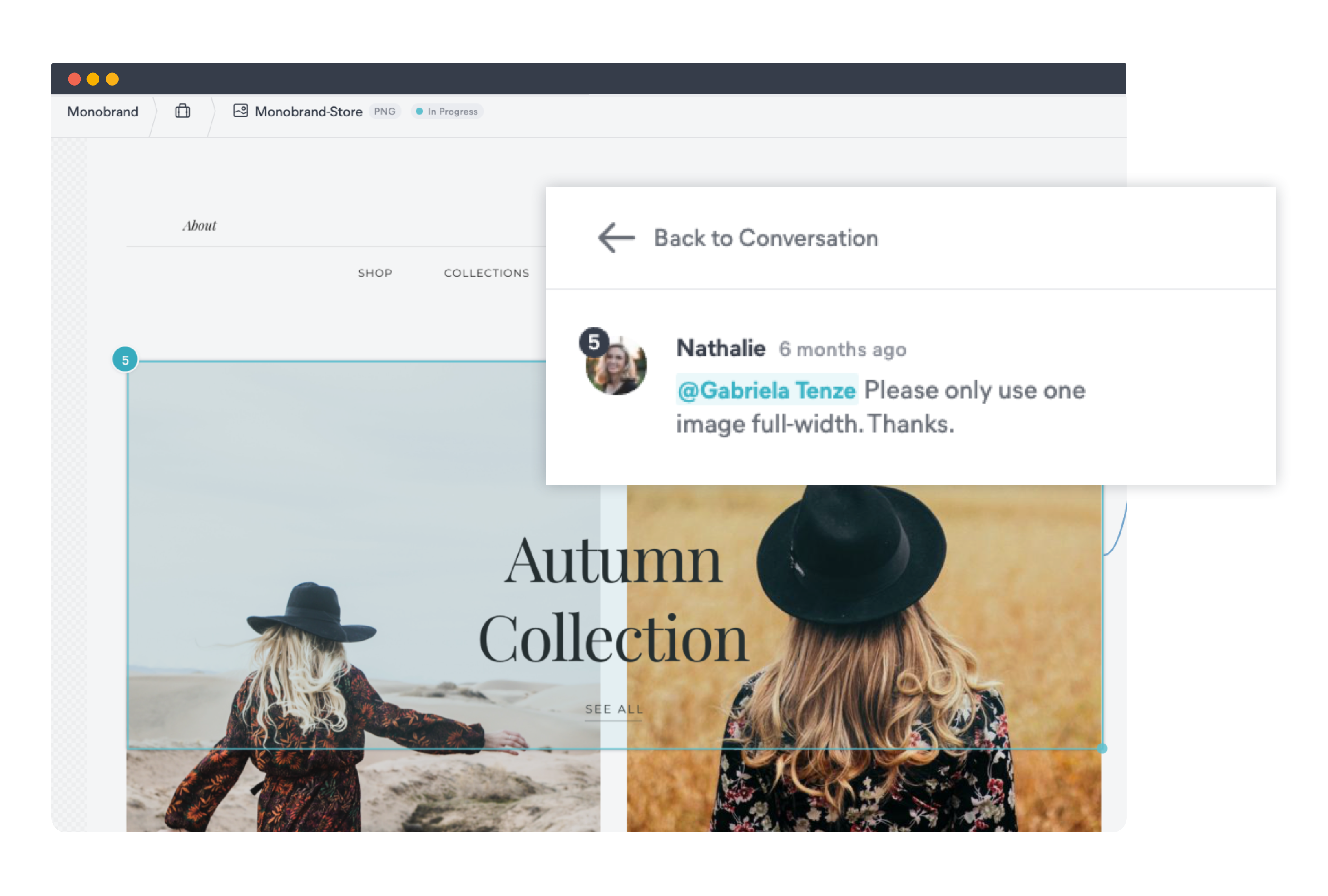
And Frontify's Inspect Mode makes it easier for developers to pull design specs to transform mockups into code without leaving Frontify. The platform allows developers to expand design layers to get measurements, colors, font styles, code, text snippets, and visual assets. Its audit functionality helps developers quickly verify that the correct brand colors and fonts are being used. This helps them find and correct errors early – before customers see them.
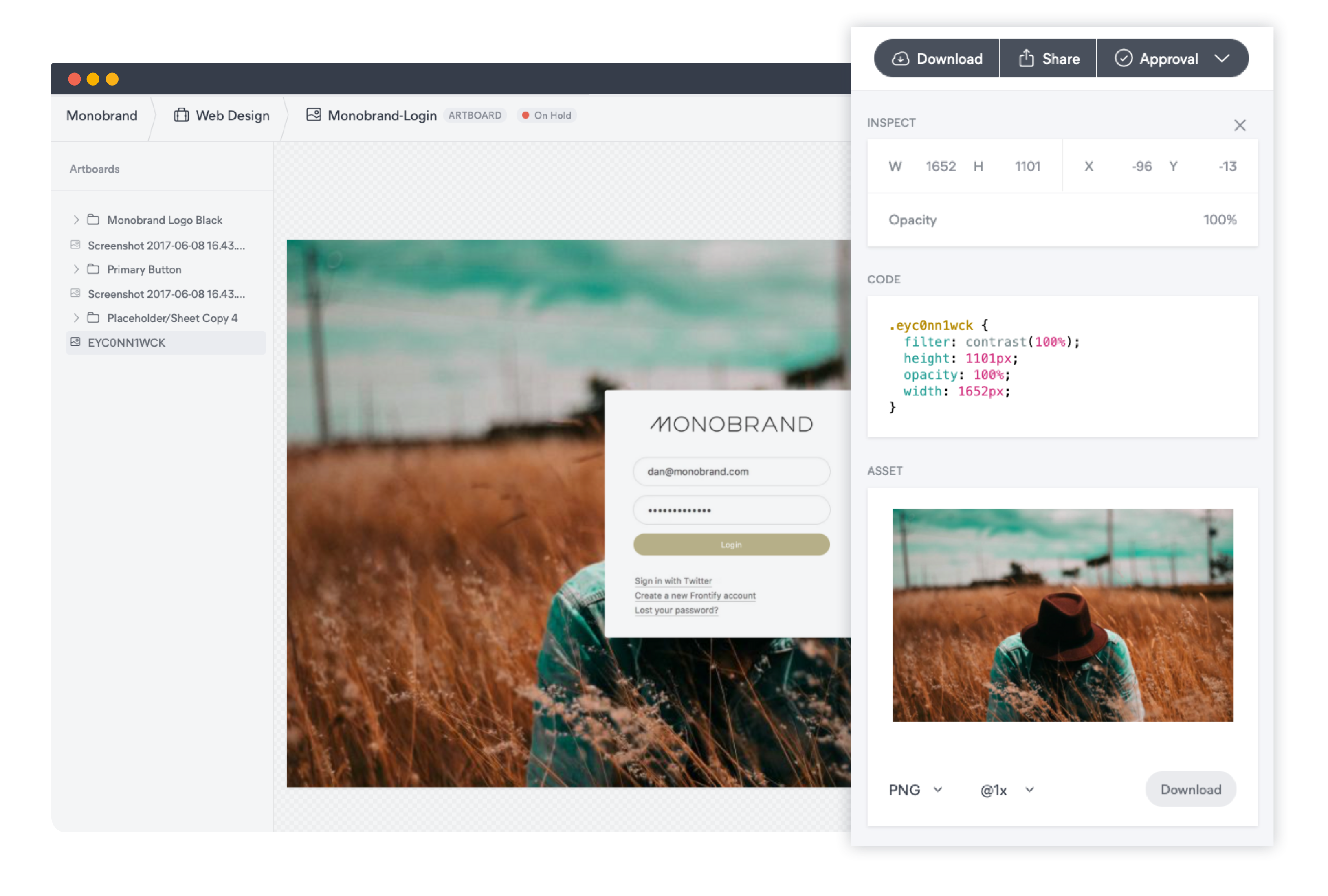
5. Create Templates for Repeat Projects
Every brand has assets they use over and over again, like business cards, presentation templates, and social media graphics. Instead of creating a new project for each use case, create a template once, and then give teammates access to make changes on their own.
With Frontify’s Digital & Print Templates, designers can create templates that are connected to approved assets, colors, and fonts. Designers can define what parts of the template are frozen and what can be changed by the user, which helps ensure consistency. And designers can see who uses the templates, and how often, to make sure they’re being used properly.
Templates can be stored in the Media Library, so teammates can easily find them to create their own on-brand assets, which can save designers days or even weeks throughout the year.
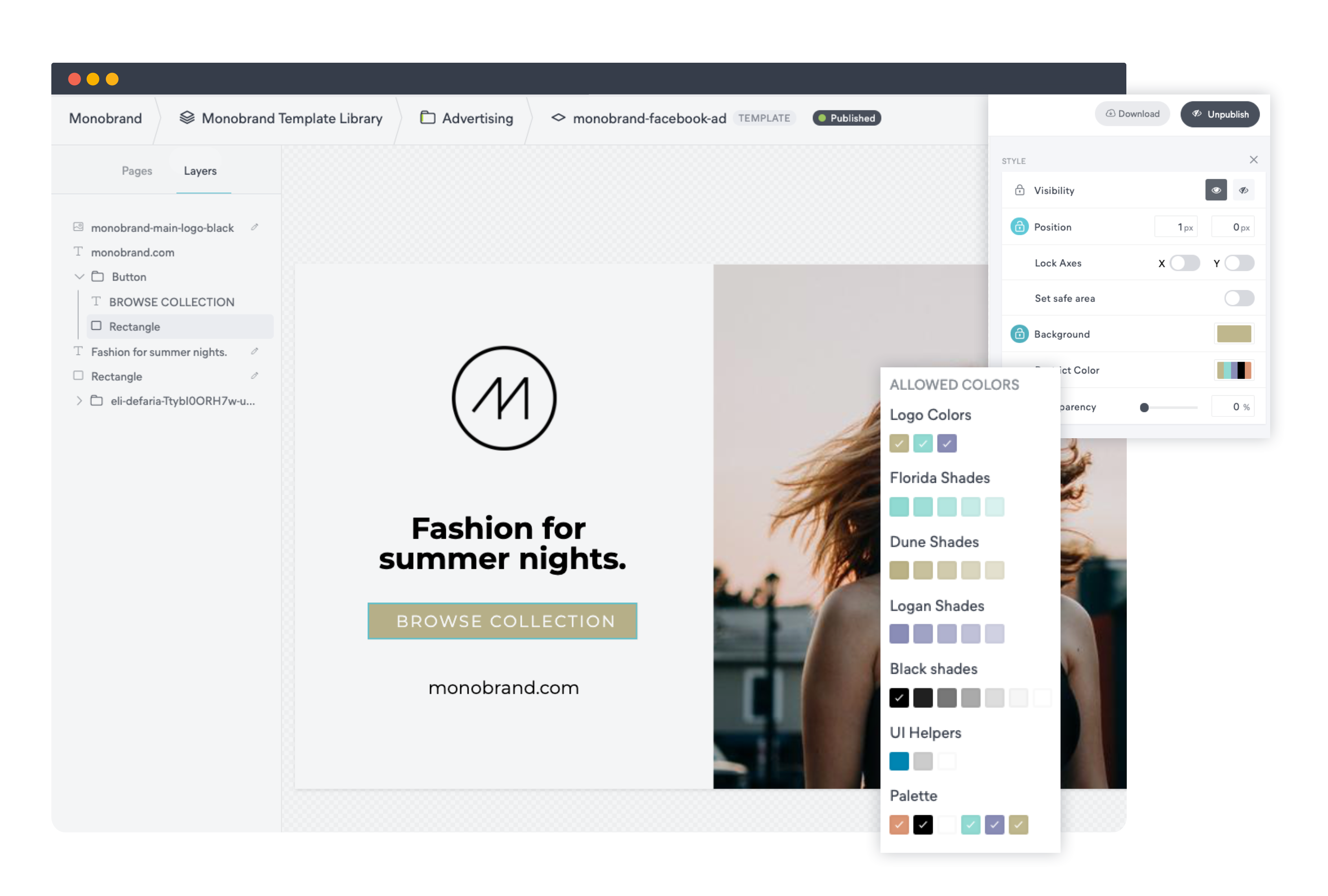
Bring Cross-Functional Teams Together With Frontify
CBOs can improve communication and collaboration among their cross-functional teams with Frontify’s centralized brand management platform. Find and share guidelines and assets, collaborate in real time, automate feedback and approvals, and improve project handoffs. With a cloud-based solution, teams don’t need to sit together to work together.
Get your teammates on the same page and get better results for your brand.

